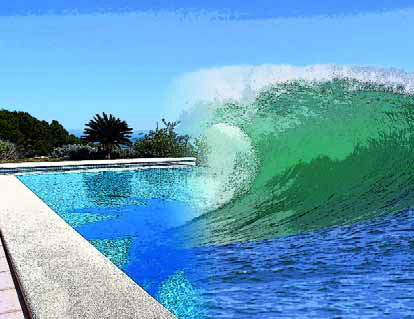fountains
Landscape-lighting design is my obsession: Not only do I make my living at it, but it has also reached a point where it informs the way I look at every landscape and watershape I encounter - whether I'm working on those spaces or not. When I visit almost any site - and particularly when I spot an interesting garden - I almost instantaneously begin formulating ideas about how I'd light it. That's a good thing, because it keeps me professionally sharp, but it's also a bit addictive: Once you start visualizing how dynamic particular places can be when properly lit, you get hooked on the mental exercise and start enjoying the intensity of the experience. In the beginning, of course, those clear visualizations
Landscape-lighting design is my obsession: Not only do I make my living at it, but it has also reached a point where it informs the way I look at every landscape and watershape I encounter - whether I'm working on those spaces or not. When I visit almost any site - and particularly when I spot an interesting garden - I almost instantaneously begin formulating ideas about how I'd light it. That's a good thing, because it keeps me professionally sharp, but it's also a bit addictive: Once you start visualizing how dynamic particular places can be when properly lit, you get hooked on the mental exercise and start enjoying the intensity of the experience. In the beginning, of course, those clear visualizations
If you've been paying any attention to the media lately, you may have noticed that watershaping is "in" as a big-time topic for television, books, magazines, newspapers and other forms of mass communication. Never in all my years as part of this industry can I recall a time during which the subject of beautiful custom pools, spas, fountains, ponds, streams and interactive bodies of water has won so much attention. It seems as if our society has finally caught on to the power, beauty and excitement of the art form many of us
As watershape designs become increasingly creative and complex, the demand for more precise methods of engineering their structures has grown as well. To meet that need, observe Ron Lacher and Aaron Cowen of Pool Engineering, experts like them are turning to advanced three-dimensional modeling technology - systems so sophisticated that they make it possible to develop plans for daring projects such as they one they describe here. It's easily the most sophisticated watershape structure we've ever engineered. The pool/spa combination, not yet built, will rise some 50 feet above grade on a cliff behind a home in the densely populated Hollywood Hills near downtown Los Angeles. As conceived, the vanishing-edge pool will sit a full ten feet below the spa in a complex monolithic structure. Supporting the entire affair will be
Successful residential exterior design is akin to a precisely choreographed dance. One sequence of steps defines the relationships among hardscape, water and plants. Other sequences distinguish light and shadow, color and texture, open views and intimate spaces. If the choreographer has done a good job, we don't see the individual steps so much as we enjoy the overall experience of motion. The key to making these multifarious steps work together? It's all about balance. Transferring these principles to backyard design, there's a similar need for
It's often said nowadays that watershaping is the art of fitting our work into the surrounding environment. In many ways, what we do at Star Pools in Houston is a prime application of that powerful yet basic concept in the way we tackle both the opportunities and limitations of the residential settings we encounter. Houston is dotted by affluent neighborhoods teeming with homes in classic Mediterranean and Tuscan styles. Stately is a word often used to describe these homes, and because we've based our design philosophy firmly on the idea that the swimming pool and garden areas should look as though they were designed as part of the home itself, our work is largely a manifestation of
The site was chosen because the existing water, terrain and natural landscape were a perfect fit: Like no other available space, the design team saw that this setting could be used to symbolize the character of Vietnam’s landscape – wetlands and bogs, water crossings, hills and forests, meadows and plains – and shaped into a memorial to casualties of a war that ended in Southeast Asia nearly three decades ago. It’s a beautiful and peaceful space, one that now encompasses four acres of land around the perimeter of Duck Pond, a small and scenic body of water nestled in the gently rolling landscape of





















A Master at Work